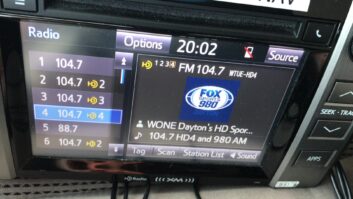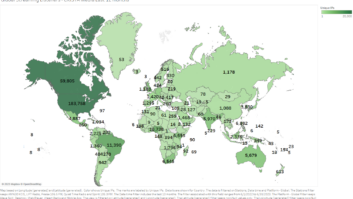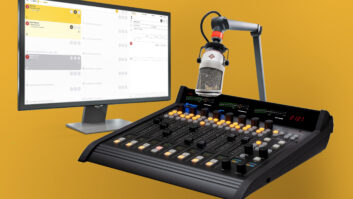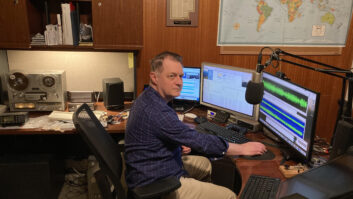
With a licensed analog ERP of 22.5 kW, WJFK(FM) was granted an STA to raise its digital power by 6 dB to –14 dBc as part of its RF project. That equates to 1,074 Watts of digital power in MP3 mode.
Using common amplification, the Harris HPX30 transmitter is delivering 13 kW of analog power and 621 Watts of digital power to the antenna that needed no changes to accommodate the HD4 multicast.
The station is dividing up its channel bitrate with 48 kbps for the HD main channel, and 24 and 24 for HD2 and HD3 channels (using up its 96 kilobits.) To achieve the HD4 channel WJFK is using the extended hybrid carriers (MP3 mode) for an additional 24 kbps.
It’s also using Neural codec pre-conditioning, which optimizes the audio for the lower-bitrate codec. The HD4 feed is being supplied to WJFK as a streaming feed over the Internet. All of WJFK’s HD channels are delivered by IP to the transmitter site in the Tysons Corner, Va. area about seven miles from their studio site, according to Tim Anderson, manager of strategic radio market/product development for Harris Broadcast.
Anderson says CBS using its HD4 to air out-of market sports is innovative; I agree. Many D.C. residents are from elsewhere on the Eastern seaboard and want to hear games originating from nearby Baltimore, Philly and New York.
And somehow, the Newsbytes version of Radio World’s story about WJFK’s “Quadcast” omitted this vital tidbit: The change comes at a unique time in sports locally as the University of Maryland men’s basketball team is now number one (tied with Duke) in the ACC. WJFK airs Terps basketball games as well as pre-and post-game shows.












